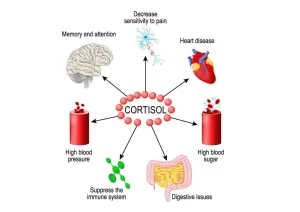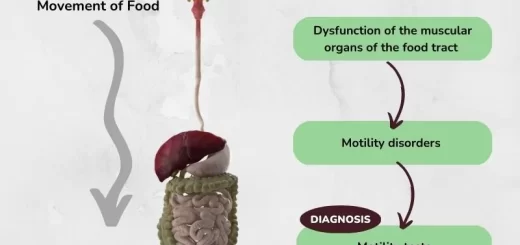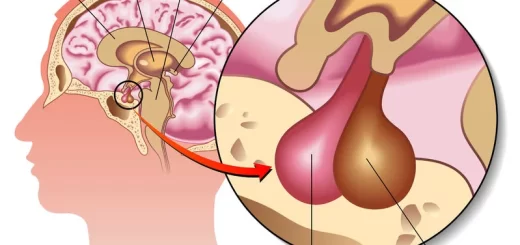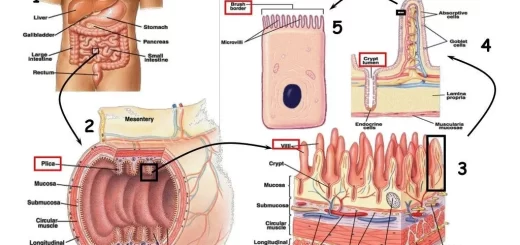Glucocorticoid (cortisol) function, Effects of cortisol on skeletal muscle and circulatory system
Glucocorticoids are less commonly known as glucocorticosteroids, they are a class of corticosteroids, which are a class of steroid hormones, Glucocorticoids can fight inflammation and work with your immune system to treat a wide range of health problems, They are used in medicine to treat allergies, asthma, autoimmune diseases, and sepsis, and the body makes its own glucocorticoids.
Glucocorticoid (cortisol)
Glucocorticoids (cortisol) are steroids in nature formed in the middle layer of the adrenal cortex. At least 95% of the glucocorticoid activity of the adrenocortical secretions results from the secretion of cortisol, and hydrocortisone. Cortisol combines with a globulin called transcortin. 94% is normally transported to the bound form and 6% is free.
Mechanism of action
The activated hormone receptor complex migrates to the nucleus and binds to specific sequences of DNA called hormone response elements (HRE). This interaction increases or decreases the transcription (synthesis of mRNA) of the target genes. This mRNA acts as a template for the synthesis of specific proteins or enzymes which cause metabolic changes.
For example, glucocorticoids enhance the transcription of hepatic PEPCK (the key enzyme of gluconeogenesis). In large doses, glucocorticoids decrease the transcription of osteocalcin in osteoblasts i.e. demineralization of bone.
Steroid hormone receptors have several functional domains, one site binds the hormone, another for translocation of the receptor from the cytoplasm to the nucleus, a third binds to a specific DNA region called the hormone response element (HRE) and a fourth activates the specific gene.
Functions of the glucocorticoid
1. Effects of cortisol on carbohydrate metabolism
It maintains blood glucose level by two mechanisms:
- Stimulation of gluconeogenesis in the liver and increased hepatic glucose output (it increases the synthesis of all the enzymes required for this reaction), Cortisol causes mobilization of amino acids from the extrahepatic tissues, mainly from muscle to the plasma to enter into the gluconeogenesis process of the liver and promote the formation of glucose.
- Decreased glucose utilization by the cells by depressing glucose transport into the cells, (i.e. (anti-insulin action) such effect leads to hyperglycaemia and makes diabetes worse.
2. Effects of cortisol on protein metabolism
- It reduces the cellular protein in all body cells except those of the liver, This is caused by decreased protein synthesis and increased catabolism of protein present already in the cells, Both these effects may possibly result from decreased amino acid transport into the extrahepatic tissues.
- Increased liver proteins and plasma proteins (which are produced by the Iiver).
- Increased blood amino acids, diminished transport of amino acids into extrahepatic cells, and enhanced transport into hepatic cells. Cortisol mobilizes amino acids from the tissues to the liver to cause such effects:
- Increased rate of deamination of amino acids and convert it to glucose.
- Increased protein synthesis in the liver.
- Increased formation of plasma by the liver.
3. Effects of cortisol on fat metabolism
Cortisol increases lipolysis and it enhances the effect of other lipolytic stimuli such as catecholamine, It increases the mobilization of fatty acids from adipose tissues, Which increases the concentration of free fatty acids in the plasma which also increases their utilization for energy.
4. Effect of cortisol on the circulatory system
It is essential to maintain normal circulatory functions and myocardial contractility. cortisol is necessary for the vasoconstrictive action of norepinephrine and other vasoconstrictives. Cortisol decreases the permeability of vascular endothelium therefore it maintains the blood volume.
5. Effect of cortisol on skeletal muscle
It is essential to the maintenance of muscular activity and even to life itself during severe exercise, Insufficiency causes rapid muscular fatigue and excess leads to muscular atrophy due to protein catabolism.
6. Effect of cortisol on the nervous system
The brain is extremely sensitive to cortisol and variation in its concentration produces changes in certain sensations as well as higher functions such as concentration, memory, and intellectual performance.
7. Effect of cortisol on blood cells and immunity
Cortisol increases the production of red blood cells. It increases leukocytes. Cortisol decreases the number of eosinophils, basophils, monocytes, and lymphocytes in the blood. Administration of large doses of cortisol causes significant atrophy of all the lymphoid tissues throughout the body, which in turn decreases the output of both T cells & antibodies, As a result, the level of immunity for almost all foreign invaders of the body is decreased.
8. Effect of cortisol on calcium metabolism & bone
Administration of glucocorticoids lower plasma calcium level and over long periods of time they cause osteoporosis by decreasing bone formation and increasing bone resorption, They decrease bone formation by:
- Inhibiting the cellular replication and protein synthesis in bone.
- Inhibiting osteoblast.
- Decrease the absorption of calcium and phosphate from the intestine by an anti vitamin D action.
- Increase renal excretion of calcium.
9. Anti-inflammatory and anti-allergic effects of cortisol
It has an anti-inflammatory effect. It blocks the early stages of the inflammatory process and inflammatory response to an allergic reaction, If the inflammation has already begun, it causes the following.
- Rapid resolution of the inflammation.
- Decrease the number of inflammatory cells.
- Decrease release of mediator as histamine & PG.
- Decrease in permeability of the capillaries.
- Stabilization of the lysosomal membranes.
- Suppresses the immune system, especially the T cells and reduces fever, It inhibits fibroblastic activity so inhibits fibrosis and adhesions.
10. Minor mineralocorticoid offect
Cortisol has a minor salt and water retention effect similar to mineralocorticoids.
Cortisol effects, Cause of melanin deposition, Adrenal androgens and Adrenogenital Syndrome
Suprarenal (adrenal) cortex hormones, structure, function and location
Suprarenal glands (adrenal glands) anatomy, structure and Effect of Deficiency of Catecholamines
Calcium metabolism, Calcitonin function, Vitamin D3 and Biosynthesis of calcitriol
Parathyroid gland anatomy, structure, function, hormones and Tetany types
Endocrine system structure, function, disorders, Endocrine Glands and Hormones types




